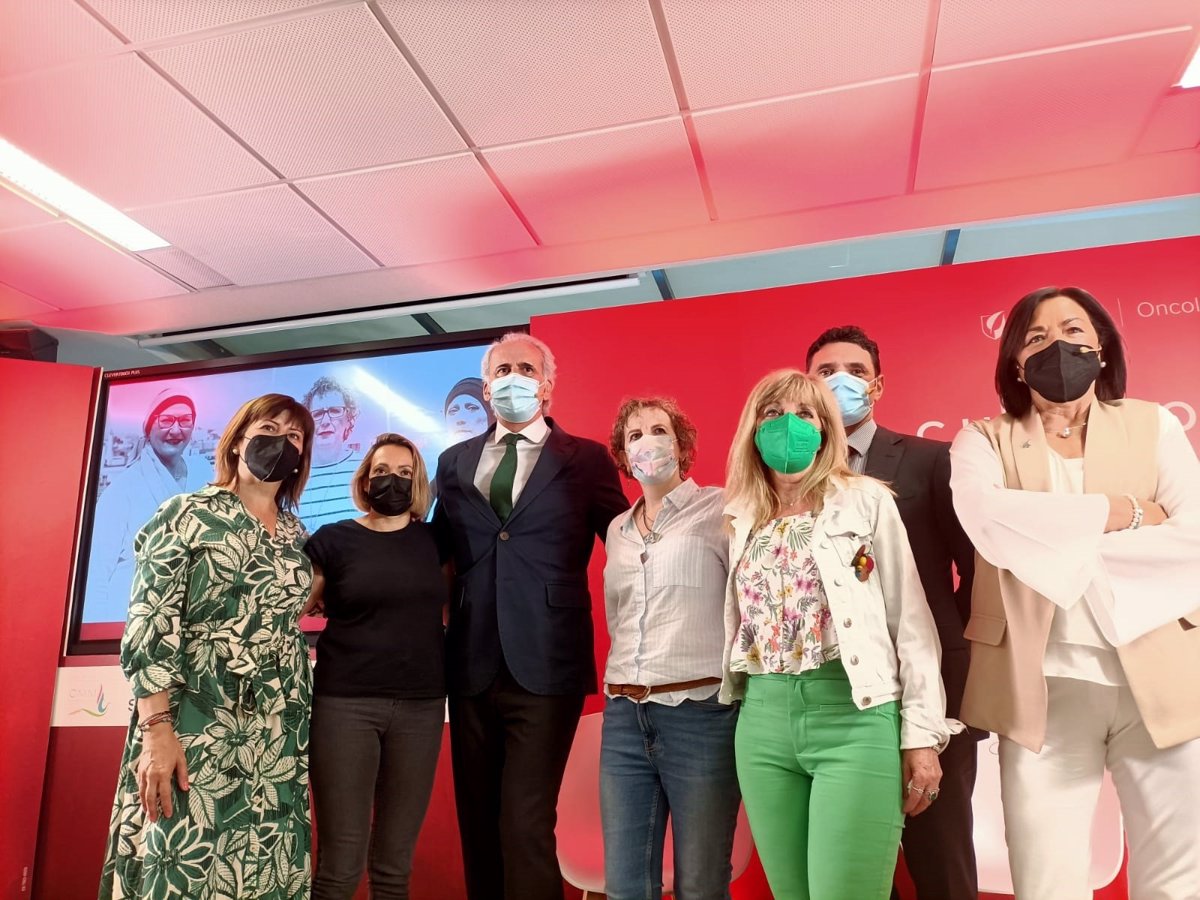MADRID, 24 May. (EUROPA PRESS) –
The pictorial exhibition ‘Pictures with Hope’ will show until June 30 at the San Carlos Clinical Hospital in Madrid nine pictures made with Artificial Intelligence (AI-Speech Analytics) to show the experience of three patients with triple negative breast cancer who They talk about their diagnosis, acceptance of the disease and hope for the future.
The exhibition was inaugurated this Tuesday by the Minister of Health of the Community of Madrid, Enrique Ruiz Escudero, and the Metastatic Breast Cancer Association, the GEICAM Breast Cancer Research Group and the Spanish Society of Medical Oncology collaborate in it. among other entities.
Every year, 34,000 new cases of breast cancer are diagnosed in Spain and it is estimated that around 10-15% of them are triple negative. Among these, metastatic triple negative breast cancer (mTNBC), which mainly affects young and premenopausal women, is the most aggressive subtype and only 12 percent of women who suffer from it survive five years.
There is still no cure for mTNCC and the available therapeutic alternatives are limited. Faced with the challenge of providing a solution to this disease, patients with mTNCC demand a greater input of innovation and see in research their main hope in the face of this pathology with such a terrible prognosis.
In this sense, the ‘Pictures with Hope’ initiative, an artistic experience promoted by Gilead, shows the emotions and feelings of the patients, reflecting the feelings and emotions through colors
light or dark that are finally reflected in the exhibited works thanks to Artificial Intelligence (AI).
Thanks to this state-of-the-art technology, it is possible to capture their feelings and their variations when discussing their illness and addressing issues such as diagnosis, acceptance or the future, highlighting the importance of research and innovation, synonymous with hope for these patients. All this information has been transformed into art thanks to a new robotic technological process.
During the event, David Marín, senior BUD Oncology at Gilead, recalled that “metastatic triple negative breast cancer has the worst prognosis of all types of breast cancer”. “Here there is no pink ribbon. The patients are young, with an active life, with family and work; they are women who cannot wait, for whom every day counts and for whom the options are very limited. For this reason, in Gilead is constantly researching to develop innovations that allow us to offer solutions and hope to these women, change their prognosis and collaborate with all the agents involved. Innovation is only useful if it reaches patients quickly, “he defended.
In this line, Pilar Fernández, president of the Metastatic Breast Cancer Association, has stressed that it is “a pathology forgotten within the social discourse of breast cancer”. From the Association they insist on remembering that the impact of the diagnosis marks a before and after in their lives and that research is the only way to the solution.
“What we need is for research to advance because the survival and quality of life of these triple-negative patients depend on oncological advances, and for these to reach all patients in an equitable way,” he stressed.
Dr. Fernando Moreno, specialist in Oncology at the Hospital Clínico San Carlos, explained that “compared to other subtypes of breast cancer, in triple negative it is more frequent that the diagnosis is already made at an advanced stage”. “In addition, they are tumors that have a higher risk of relapse and are earlier, compared to other subtypes. Above all, it is seen in the first years after diagnosis,” he specified.
In this sense, taking into account the serious prognosis of triple negative metastatic disease, the specialist stressed “the need for more research, given that the treatment alternatives are scarcer and less effective than in the others”. “We intend to better understand the biological characteristics of the disease. And from the point of view of treatment, in the short term, we would like to incorporate therapeutic advances more easily and more quickly into use in clinical practice. We have to do a greater effort so that the prognosis is at least equal to that of other subtypes of breast cancer”, he indicated.
–


